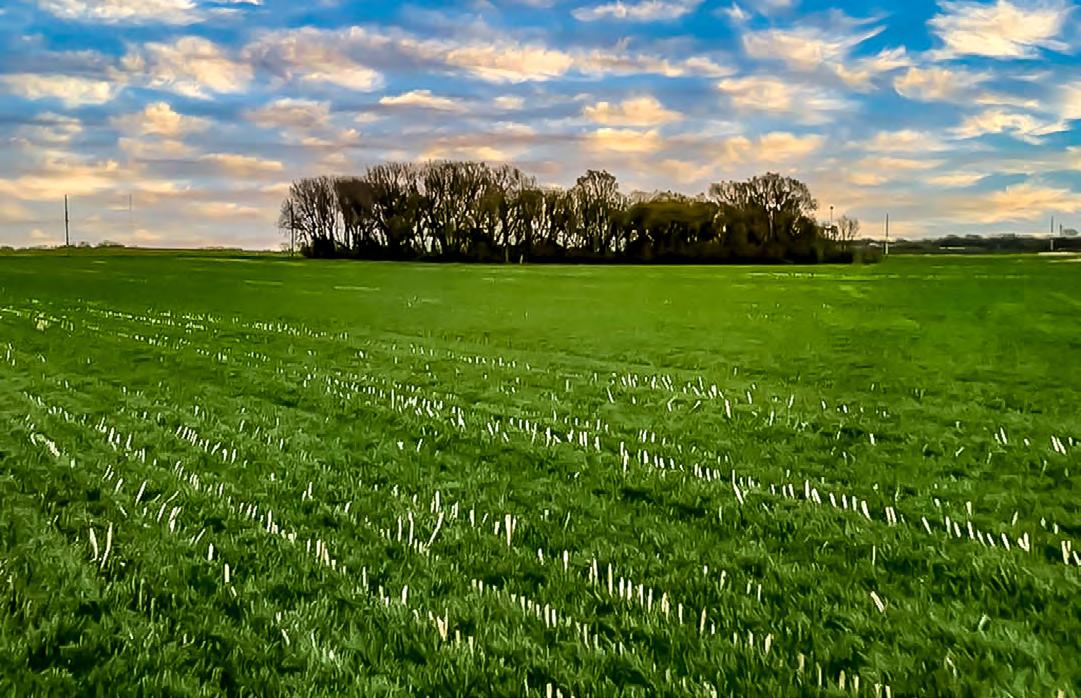

County Faith / Family / Friends / Farming





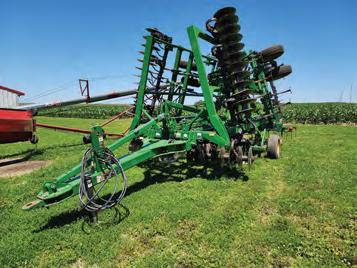













County Faith / Family / Friends / Farming



















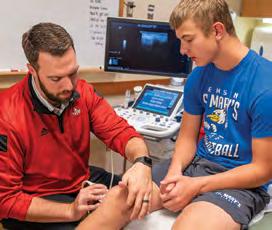


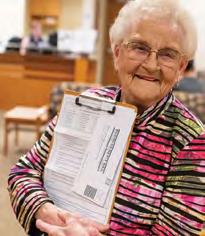



Garrett and Mindy Gross, AGE Media
EDITOR & IOWA MANAGER
Bob Fitch, AGE Media
Direct advertising inquiries, story submissions and other correspondence to:
The Farming Families, Age Media & Promotion
The Farming Families is distributed free exclusively to the farmers, ranchers and producers in rural Sioux, Plymouth and Lyon Counties. All rights reserved. Content in this magazine should not be copied in any way without the written permission of the publisher. The Farming Families assumes no responsibility for unsolicited manuscripts or photographs. Content in articles, editorial and advertisements are not necessarily endorsed by The Farming Families and Age Media & Promotion.



By Bob Fitch
Family, friends, feeding cattle and facing the turmoil of medical emergencies are all part of life for the families of brothers Joel and Paul Schuiteman of Sioux Center. Even in the midst of life’s tough times, the family is always ready for joking and laughter.
Joel’s farming and cattle feeding career began when he quit high school in 1975 at age 16. “I hated school. I got red-shirted when I was in second grade and I was sick of it forever after that.” His Grandpa Ted Kaemingk told Joel’s dad, “Just let him be. He’ll learn more by reading Wallace’s Farmer and Farm Journal than he ever will in school if he doesn’t like it.” Joel was looking forward to a life working side-byside with his father.
However, a week later, his father, Arvin Schuiteman, suddenly got sick
with a blood disease and passed away. “It was going to be Dad’s easiest winter ever because I was going to be working the cattle with him. Instead, I was thrown into it all by myself,” Joel said. “For some reason, he had taught me a lot of stuff early. He made me work a lot with the cattle when I was younger. I was beside my dad the whole time.” Joel was there when his dad was thrown over a cattle chute by a mean steer a few years earlier, resulting in a wrecked spleen, punctured kidney and lung, and broken ribs. “Dad made it through
all that and he was fine. But they’d taken out his spleen and, when he died of Streptococcus, it was because he didn’t have his spleen to be filtering his blood any longer.”
Joel and Paul’s mom, Wilemina, kept ownership of the farm while Joel took charge of daily operations with help from his younger brothers, Terry and Alan. Youngest brother Paul was in kindergarten and only six years old when their father died. Joel said friends stepped up to help. “We had a bunch of neighbors who came to help harvest, put silage up and everything. Then we just kept going. We had good neighbors and I had good uncles who helped me get through.”
Joel and his wife, Karen, had tough times in the ‘80s. “We had to sell some ground. But then we started custom feeding and it’s gone very well. I was one of the first to custom feed cattle around here. People thought we were crazy to feed for someone else. But we’re still doing it.” The biggest change over the years was putting up cattle barns. The couple bought out his mom in 1997.
Karen grew up between Sioux Center and Orange City on the farm of her parents, Ernest and Jeannette Wielenga. She and Joel were introduced at the A&W Drive-in in Sioux Center by one of Karen’s co-workers whose brother was good friends with Joel. It took him several months to work up the courage to call her for a date.

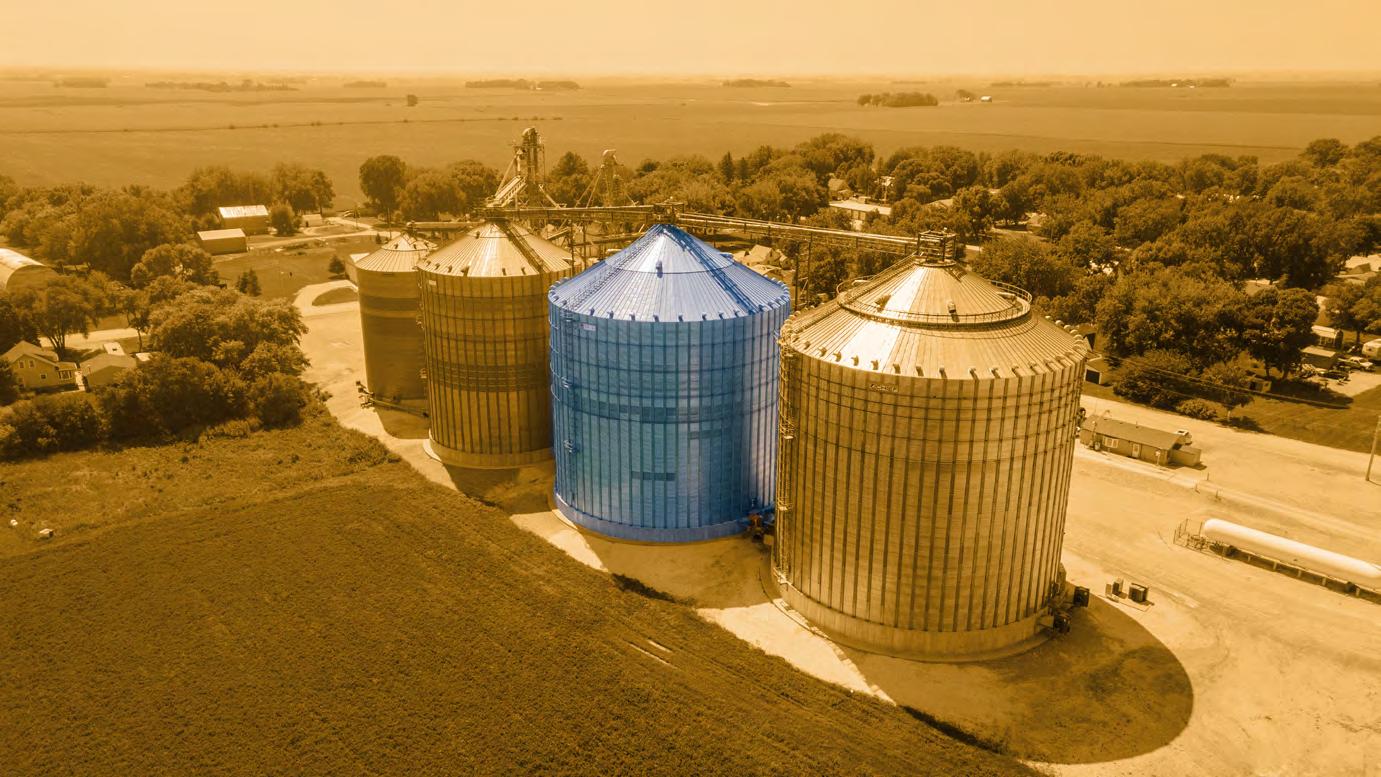




Their three daughters – Lindsay, Kari and Nicole – all worked on the family farm while growing up. Oldest daughter, Lindsay, left for college, but came back to work on the farm until she married Fred Staudy. The couple has a cow-calf operation at Bryant, South Dakota. “Lindsay likes the cow-calf work; she loves the babies,” said Joel.
Kari worked on the Schuiteman farm until she went to work for an accounting firm. One of her clients was a 1,000-head dairy at Wolsey, South Dakota – and she married Lucas Jungemann, who is the son of the dairy’s owners. His mom connected Kari and Lucas, who are moving into ownership of the dairy operation. Their three children are Vonn, 8, Walker, 3, and Ava, 2.
Nicole works as a nurse in Sioux Center. Her husband, Nathan Larson, is originally from Groton, South Dakota, and then worked in Mitchell for about seven years.
He and Nicole met through an online dating site. Nathan is now employed on the Schuiteman farm and has been taking over a lot of the feedlot work. He has been a key player when accidents and other medical issues have sidelined Joel. About two years ago, one of the steers rolled Joel, got him down on the cement, and laid on him. Nathan teased his father-in-law: “He was just a little one. He was just itching on you.” “Oh yeah, an 1,100-pounder. He looked a lot bigger when his head was right in my chest.” Joel has had a hip and shoulder replaced; plus he had prostate cancer surgery and got an infection after the surgery. He tends to get chewed out for getting back to work too soon after medical events.
Ten years younger than his oldest brother, Paul learned farming and feeding cattle through on-the-job training at his brother’s side. After
high school, he worked on the farm full-time, but then worked in town for a while during the 1980s. Schuitemans started custom feeding hogs and doing some custom farming for neighbors –whatever it took to keep the things rolling.
Paul’s health has been a roller coaster ride since he was a young man. He was diagnosed with primary sclerosing cholangitis when he was 18. PSC is a longterm progressive disease of the liver and gallbladder characterized by inflammation and scarring of the bile ducts. The condition was successfully treated with medication for many years. Joel joked, “The doctors at Mayo kind of used him as a test rat with all the different drugs he was on.”
In late 2005, Paul’s health took a turn for the worse. In January 2006, Mayo Clinic called saying a liver was available for a transplant. From his frequent doctoring, Paul knew the staff at Mayo well. Upon arrival, a nurse receptionist with a familiar
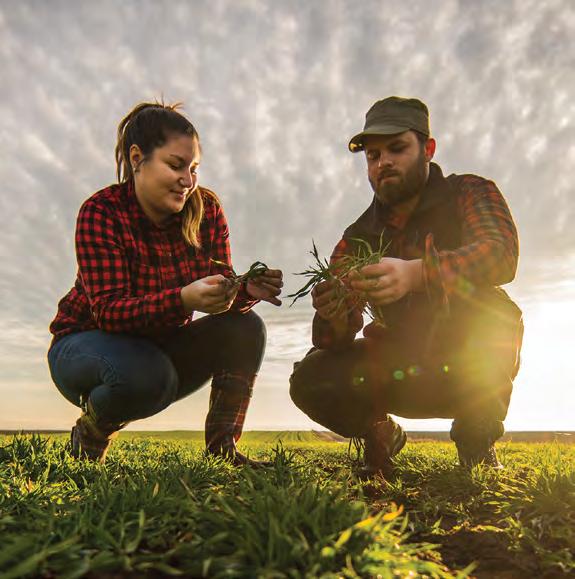

















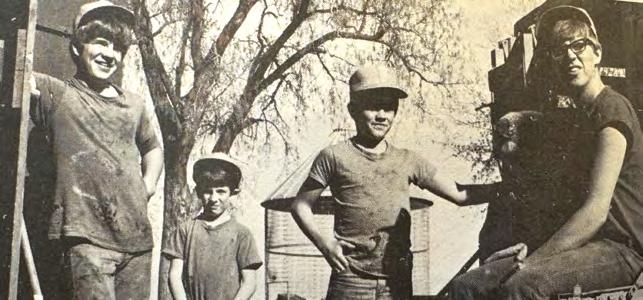
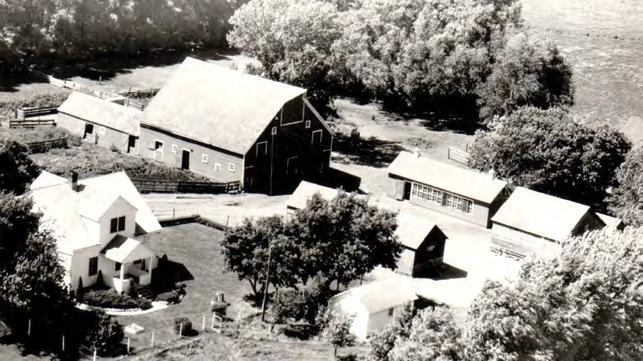
face greeted them with the news: “I’m sorry. We had to give the liver away; you didn’t get here fast enough” –even though they had raced across I-90 at high speeds with law enforcement clearance. But the shock was just payback for the years of teasing and joking he was known for among the Mayo staff. The receptionist told him, “If you were any other patient, I’d get fired for kidding around like that.”
Paul’s recovery was amazing. True to family form, he went back to work sooner than prescribed. He kicked Joel out of cattle feeding duties because … “It was just painful to watch him. One of our customers said the cattle looked happier when I got back.”
The successful transplant allowed Paul to stick around for bigger and better things. In 2014, at his niece Kari’s wedding, he met Ashley Cannon and was paired up with her in the wedding party. At the time, Karen had a premonition that a match had been made. Paul and Ashley were married in 2018 and now have two children, Wilemina, 5, and Cannon, 3. Paul and Ashley have a 20year age gap, but Ashley said, “I feel like God had to use all the illness and liver transplant to grow Paul's faith to get him ready to put up with me!”
Mina got in early on the “family fun” of traumatic medical events when she fell about nine feet off a set of


stairs just after Christmas 2022 at a friend’s house. She showed no symptoms of a concussion and didn’t seem to be seriously hurt, but they went to the hospital to be cautious; and, in fact, Mina had a skull fracture and a brain bleed. She had an emergency craniotomy – and ended up with five plates and 23 screws in her head.
Just like her dad and her Uncle Joel, it didn’t take long for Mina to be back in the thick of life. “The doctors said it would be hard for us to keep her down to heal. And that's been true,” Ashley said. Three days after the surgery, Mina was up and talking to everyone.
Talking to everyone is a Schuiteman trademark. “We’ve got a lot of friends. A lot of people like to stop by to talk in my little shack,” said Joel. The Schuitemans and their neighbors also are always there to help whoever is in need, just like when Arvin died almost 50 years ago.
“We've had a very good life,” Joel said. “We've been blessed. It's been a God deal all the way through our life. We’ve had some rough stuff, but with family and friends, we’ve always seen through it.”




























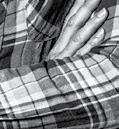




future of agriculture is our future, too. That’s why we’re working with nearly 9,000 young and beginning producers –providing guidance, scholarships, youth programs and more.
The Grand Army of the Republic (GAR) was the largest of all Union Army veterans' organizations after the American Civil War. It was the most powerful single-issue political lobby of the late 19th century, securing massive pensions for veterans and helping to elect five postwar presidents from its own membership.
According to Stuart McConnell, author of Glorious Contentment: The Grand Army of the Republic, 1865–1900, the GAR was also a secret fraternal order, a source of local charity, a provider of entertainment in small municipalities, and a patriotic organization.
The GAR became one of the first organized advocacy groups in

American politics, supporting voting rights for black veterans, promoting patriotic education, helping to make Memorial Day a national holiday, lobbying Congress to establish regular veterans' pensions, and supporting Republican political candidates.
In 1936, the Iowa State Historical Society published The History of the
Iowa Department of the Grand Army of the Republic. Among the profiles in the book are four local veterans who served as commanders of the Iowa Department of the GAR.

1842. He moved to Linn County, Iowa, with his parents in 1850. Later they moved to Black Hawk County. He enlisted in Company E of the 5th Iowa Infantry in July 1861, at the age of 19. He was in some of the heaviest fighting of the Western Army, including the battles of Corinth and Iuka and the siege of Vicksburg.
After the war, he returned to farming in Black Hawk County before moving to Sioux County. He was a member of the Iowa General Assembly during the 25th and 26th regular sessions. He was elected commander of the Iowa Department of the GAR in 1899.
Several years later, he moved to North Dakota and he died in 1925.
Charles L. Davidson was a native of Ohio. He came to Iowa at an early age and located in Washington County. At the age of 18 in 1862, he enlisted in Company A of the 25th Iowa Infantry. In March 1864, he was transferred to the Veterans Reserve Corps. In 1891, Davidson was a resident of Hull when he was selected as commander of the Iowa Department of the GAR.
Past Department Commander Josiah Given described Davidson
this way: “He was a brave solder, he was a model citizen, he was a public officer that executed his duties, so that he rose even beyond suspicion; he was a comrade true to every teaching of fraternity and charity; loyal to friends, loyal to country and loyal to citizenship.”
Wilbert S. Freeman was born in Essex, Vermont, on June 6, 1847. At the age of eight, his family moved to Illinois. When the Civil War broke out, he enlisted and served as a musician in Company B of the 8th Illinois Cavalry. He returned to Illinois after the war and then moved to Plymouth County in March 1869. He served as Plymouth County recorder and, for almost a decade, was postmaster at Le Mars. He was a charter member of the Mower Post #91 of the GAR which was organized at Le Mars in 1882. In June 1923, he was elected senior vice department commander, but two days later became the state commander upon the death of W.W. Gist.
James K. Polk Thompson was severely wounded at the Battle of Vicksburg. He was born near Carey,




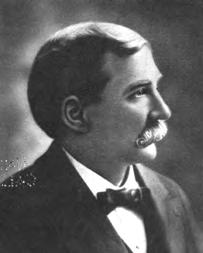
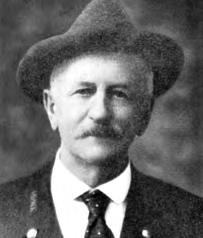
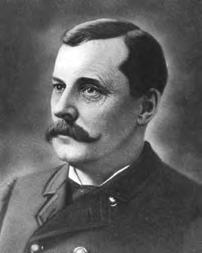
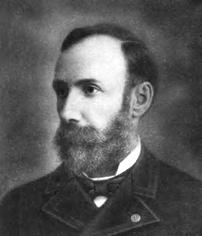
Ohio, in 1845, and came to Clayton County, Iowa, in 1857. He enlisted as a musician in Company D of the 21st Iowa Infantry and rendered service at the battles of Port Gibson, Champion’s Hill, Black River Bridge and Mobile.
After the war, he became a charter member of the GAR Dunlap Post #147 at Rock Rapids. In 1895, he was elected commander of the state’s GAR. He was a strong advocate for the legislature to erect a monument at Vicksburg, Mississippi, in honor of Iowa veterans. He died in 1903.



The GAR was organized into "Departments" at the state level and "Posts" at the community level, a system later emulated by the Veterans of Foreign Wars and the American Legion. Soldiers under the command of General William Tecumseh Sherman in Mississippi in 1864 first developed the idea of a fraternal organization consisting of the Union veterans of the Civil War. The soldiers agreed the “glories of war” were a delusion and too often soldiers were left to die “unwept, unhonored and unsung.” In the spring of 1866 in Springfield, Illinois, the men met again to organize the Grand Army of the Republic.
Major Benjamin Franklin Stephenson, a native of Illinois who served with both Grant and Sherman, was the chief promoter of the idea of a soldier’s organization. Stephenson had strong ties to Iowa, studying medicine for a time at his brother’s office in Mt. Pleasant. He was also a lecturer on general, special and surgical anatomy in the College of Physicians and Surgeons, a branch of the State University of Iowa at Keokuk. He died in 1871 when the GAR was still in its infancy.
Iowa was one of the first states to organize its own department of the GAR. The organization was in large measure responsible for the establishment of the Soldiers’ Home at Marshalltown. In 1890, Iowa membership reached a peak of 20,324 members. There
were 438 posts in Iowa in 1895.
Gatherings of the veterans were called “encampments.” In 1922, more than 20,000 veterans gathered for the National Encampment in Des Moines. The state encampments held nearest to this area were in Sioux City and Fort Dodge.
The GAR’s mission was three-fold: (1) To preserve and strengthen the fraternal feelings which bind together the soldiers, sailors and marines who united to suppress the rebellion; and perpetuate the memory and history of the dead; (2) To assist former comrades in arms and extend aid to widows and orphans of soldiers; (3) To maintain true allegiance to the United States, based upon respect for and fidelity to the Constitution, and to “discountenance whatever tends to weaken loyalty, incites to insurrection, treason or rebellion” and “to encourage the spread of universal liberty, equal rights and justice to all men.”
For more than a quarter of century after its organization, the GAR had steady growth, reaching a peak of more than 400,000 member in 1890.
Sources
• The History of the Iowa Department of the Grand Army of the Republic. Compiled by Jacob A. Swisher. Iowa State Historical Society, 1936.
• en.wikipedia.org/wiki/Grand_Army_of_the_Republic
• WikiMedia Commons, photos in public domain.








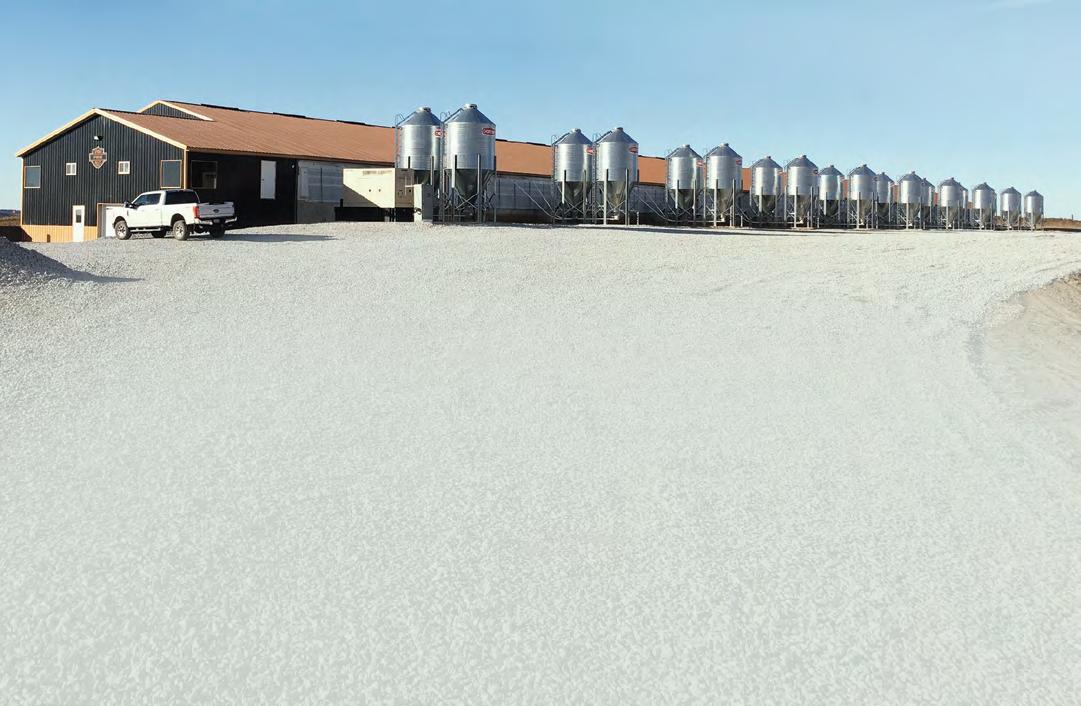













By Jennifer Dukes Lee, author Story teller and grace dweller from Inwood, Iowa
This summer, our corner of the world has gone through unprecedented flooding. Water rushed in so quickly that many people had to leave their homes with only the clothes on their backs, and -- if they were lucky -- their pets and meds. Some people were stranded on roofs as they waited for rescue boats, motoring down streets meant for cars.
Our home and our farm fields are fine, but many of our close friends and neighbors are struggling. They’ve lost their furniture, vehicles, businesses, and in some cases, their entire homes.
But here’s something they haven’t lost: their resolve.
I am utterly in awe of the resiliency of the human spirit in times of great trial. I’ve also been profoundly grateful to see the Church do what the Church is called to do – offer love
and food and prayer and cots and shoulders to cry on and sleeping accommodations in sanctuaries and Sunday school rooms.
This is as it should be.
In times like these, we raise our eyes to darkening skies and ask, “God, where are you?”
And He answers back in His Word: “The Lord sits enthroned over the flood” (Psalm 29:10).
I don’t subscribe to the theology that God goes around making bad things happen to people. I do know this: We live in a broken world with chaos and confusion and heartbreak and breached levees. In this chaos, God draws near.
Floodwaters are incapable of knocking God off His throne. He is above the
deluge. But here’s the most mindblowing part of it all: God is also IN IT with us. That’s the stunning beauty of the Christian faith. Our God is not a disinterested bystander to our pain. He entered into it, choosing to become a man, choosing to know our heartbreak in an intimate way. Thank you, Lord. We need You now.
Please join me in praying for all those affected by these historic floods.
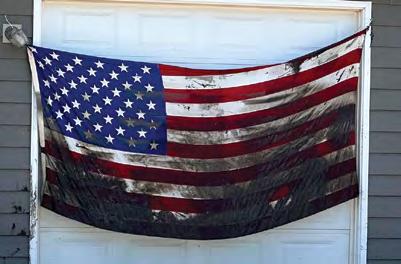
By
Oftentimes, when a crisis occurs, it’s difficult to find the positives and focus on the blessings. But I think I found a few things to be thankful for.
I am continuously amazed at my deputies and dispatchers. I wish you could all have seen these people handle these emergencies presented to them with poised, professional dedication. During the flood and its aftermath, the tireless, selfless work of the following people did not go unnoticed: Area fire departments and police departments; Plymouth County Sheriff's Office; Dive Teams of Sioux County, Plymouth County and Sioux City; the Iowa State Patrol; EMTs; first responders, Iowa Department of Transportation; Sioux County Highway Department;
Iowa Department of Transportation; city of Sioux Center; USAR. You all stepped up beyond the normal expectations and gave your all. You made it seem effortless, even with very little sleep.
To my leadership team of Chief Deputy Nate Huizenga, Lt. Justin De Bruin, Sgt. Brad De Kam, Sgt. Chad Van Ravenswaay – your courage, strength and perseverance helps me know that this office is heading in the right direction and will continue to impact this county long after I’m gone. Here’s a favorite quote of mine: “To know even one life has breathed easier because you have lived. This is to have succeeded.”
-Ralph WaldoEmerson Community members: Please give them a big shout out if you see them. The sandbagging, and

countless other acts you came out to do helped in ways you’ll never know.
To Chief Nate Huizenga/Emergency Management Director: Your



dedication, preparedness and organizational skills are above and beyond, spot-on and take “protect and serve” to a new level. I am grateful and privileged to serve with you.
Citizens of Sioux County; your selfless giving, generosity and hospitality is not often seen in today’s world. I commend you and am grateful and humbled, especially in moments like these, that you have chosen me to be sheriff of this county.
One of my favorite verses, 1 John 3:17 … “If anyone has material possessions and sees a brother or sister in need but has no pity on them, how can the love of God be in that person? Dear children, let us not love with words or speech but with actions and in truth.” Sioux County your, actions spoke volumes!
Governor Kim Reynolds, Representative Skyler Wheeler, Iowa National Guard: Thank you for responding quickly and for “hearing” the need and sending aid and extra hands. We need strong, caring leaders that act more than they speak.
Sioux County, City of Rock Valley, City of Hawarden: Let’s not do this again for a while; but if we must, let’s face it with the same strength, patience, giving and faith we did this time.

Words can’t even describe the devastation our small town is experiencing. Some have lost a little and some have lost everything. Nearly everyone I have come into contact with has said the same thing. “Things could be so much worse for us.” I’m amazed at the resilience of this town. We personally didn’t lose our home, but our business flooded and we aren’t sure when we will be up and running, just like the other flooded businesses. And honestly, that’s a scary place to be.
We all have varying degrees of hard right now. I experienced hope yesterday when a group of amazing friends showed up and spent the entire day in the mud with us. Literally and figuratively. My prayer is that everyone will experience a little bit of hope today. And if you do, then share it with someone, because for some people, hope is all they have right now and we need to hear each other’s stories.
-From a Facebook post by Kathy Van Otterloo Godfredsen of Rock Valley










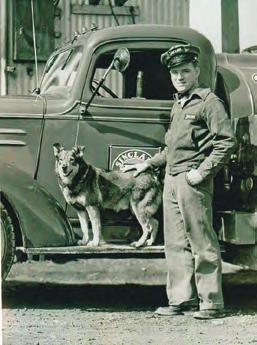

By Bob Fitch
Every August, all roads lead to a small town in Lyon County that puts on a big-time celebration. This year’s Little Rock Corn Show is Thursday, August 22nd through Sunday, August 25th.
The event kicks off on Wednesday evening with the Lyon County Pork Producers Feed. Bingo is on tap Thursday evening and things really get rolling on Friday. The carnival opens at 3 p.m. The evening starts with the Little Rock Queen Contest followed by the first of two “button drawings” where more than $35,000 in prizes are given away.
The carnival rides continue on

Saturday, plus there is the youth pedal pull, entertainment under the tent, a pork dinner by the Town & Country Club and the second button drawing. The Corn Show Parade is at 2 p.m. and is preceded by the 24th annual Golf Ball Roll down Main Street.
Sunday is another big day with the Omelet/German Pancake Brunch at City Hall in the morning and a joint
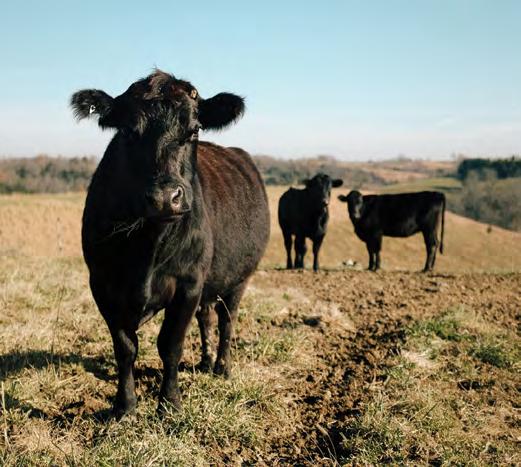
church service under the Corn Show tent at 10 a.m. (The Presbyterian and Reformed Churches alternate responsibility year-to-year.) The afternoon includes the Show & Shine Car Show, as well as a sand volleyball tournament, bean bag tournament and antique tractor pull. The shade in the park makes the car show a popular spot. The final schedule will be published in the Little Rock Free Lance.

The origins of the Little Rock Corn Show stretch back more than 100 years. The original iteration of the show started in 1907 when a Little Rock bank held contests for area farmers: Best ear of corn, longest ear, heaviest ear and tallest stalk. By 1931, it had grown into a community festival and its name grew to be Little Rock Corn and Grain Show. The Little Rock Bakery gave away 2,000 donuts. There was a Childrens’ Parade, an accordion contest and a dance; plus the Great Turtle Race. During the Great Depression of the 1930s, most of the entertainment was provided by local residents.
The Corn Show was discontinued during World War II, but the second iteration was launched in 1948. Farmers again had corn and grain contests and merchants competed for the best window display. There were foot races, a tug of war competition, a mini carnival, a full
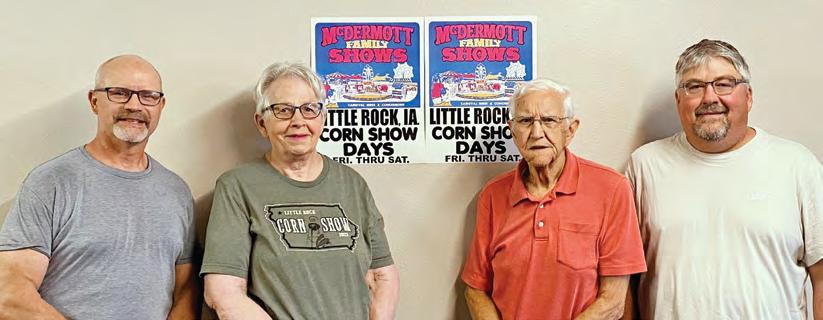
parade and two nights of dancing. More than 2,000 people attended.
The Corn Show Queen contest was added in 1951. There was a time when the queen was chosen by the Little Rock High School class which sold the most Corn Show buttons. An estimated 4,000 people attended the parade in 1962. A tractor pull was added in 1966 and a softball tournament in 1972.
Four different generations involved in organizing and promoting the Little Rock Corn Show – Tom Ver Steeg, Scott Kruse, Virginia Klaassen and Gene Peters – sat down to visit about the event earlier this summer.
Gene Peters, 91, is a resident of Little Rock and a retired farmer who has been actively volunteering for the Little Rock Corn Show since


the 1940s. After World War II, he said the show was run by the Little Rock Commercial Club for 25 years; then taken over by the Optimists Club; and that club evolved into the Little Rock Town & Country Club. This year’s show will be bittersweet with the recent death of his close


for you.
Chuck and Perri Houtsma
Chad and Jill Houtsma
friend, Darrell Ver Steeg, one of the Corn Show’s long-time organizers. “Darrell was a big part of us here,” said Scott Kruse, 46, who is the president of the Little Rock Town & Country Club.
Gene remembered the show during his youth. “Back in the ‘40s when

I was in high school, we had a big tent set up by the old Presbyterian Church. That’s where all the production contests were held. A friend and I stayed overnight there ‘guarding’ the displays. In the first years, our carnival brought in the girly shows and the fighters and the whole works. They had a tent with a guy who would take on and fight anybody in the town. He got whipped a few times here.” He can also remember when they had greased pig contests with the young guys all taking a turn to catch the slick swine. “We had bed races and a tug of war for both men and women.”
The Corn Show was held in late September for many years. The corn crop was closer to maturity at that time, making the contests more interesting. But the corn and grain contests continue today, and garden produce makes up a big portion of the production





competition. There are also displays of locally-made crafts.
A number of years ago, the Town & Country Club moved the Corn Show into August in an effort to best the school calendar. But the start of the school year creeped earlier over the years and now the first day of school typically lands on the first day of the show.
What’s the secret formula to keep the Little Rock Corn Show going strong? “We're pretty proud of our show. Our parade has always been big. Our town doubles or triples in size. Also, people have a hard time believing a town our size can support a carnival – and that’s a big draw,” said Virginia Klaassen, 81, who has been with the Little Rock Free Lance newspaper since 1979. Corn Show chairman Tom Ver Steeg, 53, agreed: “As long as we have the carnival, the Corn Show is worth sustaining. You wouldn't believe the number of people from other little towns who come in and want the number for our carnival operator.”
Virginia said the event and the town “wouldn't be what it is without the Town & Country Club members.” The civic advancement organization consists of farmers, business owners and individuals who strive to make the town a better place to live.





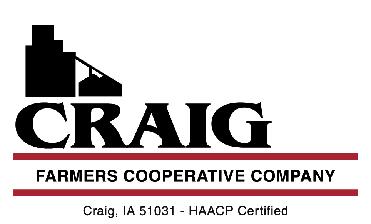













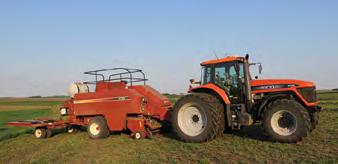



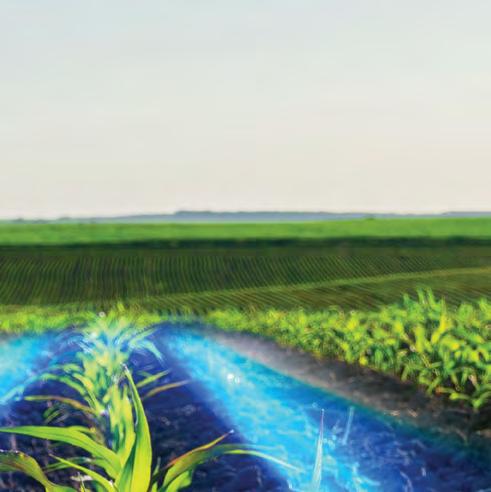















INGREDIENTS:
1 pound beef Blade Chuck Steak
2 teaspoons Mediterranean Spice Mix
2 zucchini, cut lengthwise
8 baby sweet bell peppers
1 teaspoon olive oil
Marinade
2/3 cup balsamic vinegar
2/3 cup olive oil
1 Tablespoon Mediterranean spice mix
DIRECTIONS:
Combine marinade in a small bowl. Place beef Chuck steaks & marinade in food-safe plastic bag; turn steaks to coat. Close bag securely and marinate in refrigerator 6 hours or as long as overnight, turning occasionally.
In a medium size bowl toss zucchini & mini bell peppers with 1 teaspoon olive. Place vegetables on grid over medium heat. Grill 3 to 5 minutes on each side. Remove from grill and set aside. Once slightly cooled slice zucchini into 1/4inch slices and set aside.
Remove steaks from marinade; discard marinade. Season each side of the steak with 1/2 Tablespoon of spice mix. Place steaks on grid over medium, ash-covered coals. Grill, covered, 3 to 4 minutes (over medium heat on preheated gas grill, 3 to 4 minutes) for medium rare (145°F) to medium (160°F) doneness, turning occasionally. Remove from the grill and season with salt, as desired. Serve alongside grilled vegetables.


